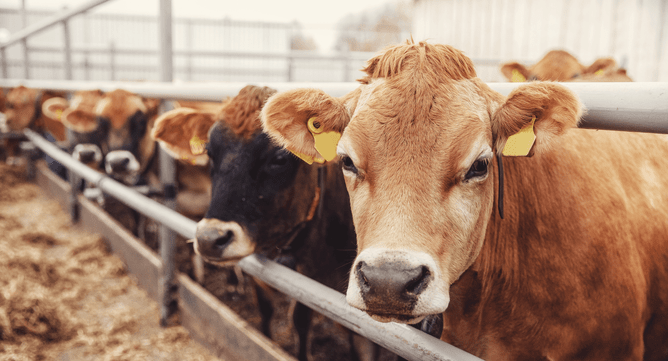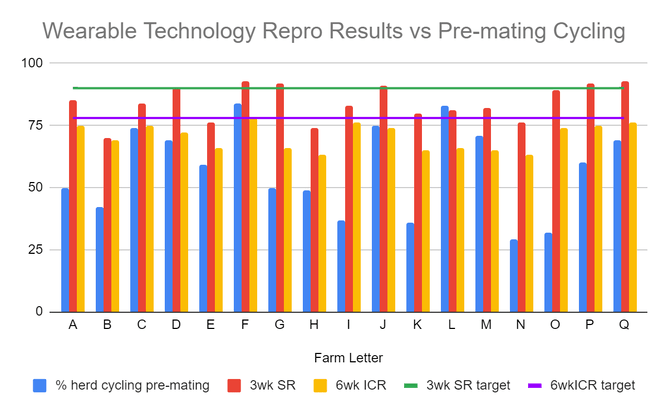Let's look at the influence of pre-mating heat detection on reproductive performance.
With the rising popularity of wearable technologies in dairy herds, it is opening a wealth of data for analysis that can be of benefit to both the farms using it and non-users.
In particular, collars/tags record when a cow experiences a heat, enabling us to track how well the herd is cycling in the lead up to mating.
This year, I tried to look at the reproductive performance of some of our technology-using farms that gave us access to their data and compared this back to their cycling rates pre-mating.
By looking at two of the key indices of repro performance - 3-week submission rate (% of cows mated in the first 3 weeks of mating) and 6-week in-calf rate (% of cows pregnant in the first 6 weeks of mating), we can see if the farms with higher rates of pre-mating cycling performed better, or not.
The results are in
I have combined the results from some of our farms using either AllFlex collars or CowManager tags. Both systems are different in the way they calculate and display their data, but both do allow third party access to the data by vets, which is great!
All farms have been anonomysed for privacy:
Cycling pre-mating
These results are a bit of a mixed bag. The mean % of the herd cycling pre-mating was quite low, at 57%. The target is 65% of the herd to be cycling 10 days before mating starts.
However, these farms had a range of planned start of mating (PSM) dates (from 23rd October – 5th November) and, it is not possible to access data retrospectively. So, these results are not all from 10 days before PSM, making any true trends harder to interpret.
This highlights that our technology team is still learning about these different systems. Next year, we will aim to record this data more accurately in the lead up to mating time!
3-week submission rate
The mean 3-week submission rate was 84%, which is slightly below the national target. This is a good reflection of most farms in the area this season, with some poor weather at the end of October/beginning of November.
Only 6 out of the 17 farms met the 90% target, but it is worth remembering that submission rates can be artificially increased by enrolling high numbers of cows into a non-cycling cow CIDR programme.
6-week in-calf rates
6-week in-calf rates averaged 70%, with a range of 63-76%. Considering the poorer rates of cycling, this is quite respectable.
Come along to our Repro Round-up events to find out how this compares with the clinic-wide results:
- Repro Round-up West: Winton Golf Club, Wednesday, 1st May at 6pm.
- Repro Round-up East: Croydon Lodge, Tuesday, 30th April at 6pm.
So, are cow wearables making a difference to repro results?
Overall, there was a wide range of results from these technology farms (which operate a variety of different farm systems, levels of reproductive intervention, nutrition, herd size etc).
There is probably a trend of higher rates of pre-mating cycling leading to better submission rates and a follow-on higher 6-week in-calf-rate. However, given the limitations of the data, it is not conclusive.
In addition, there are many other confounding factors - such as farm system and use of hormonal interventions - which make it hard to accurately compare farms.
However, the results do show that it is still important to measure and record pre-mating cycling, whether you use wearable technology or not.
When you know how many of your cows are cycling before mating, you have the chance to act on that if required. This could be by giving non-cyclers extra feed rations, running them in a separate mob, enrolling them in a non-cycling cow programme, or another strategy.


